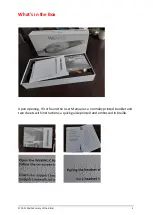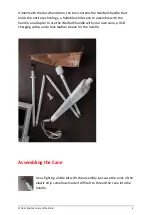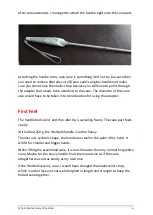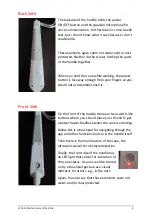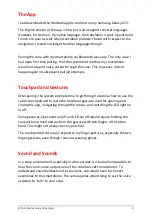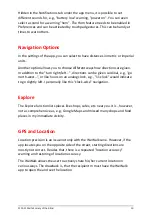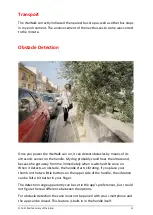
© 2021 Malta Society of the Blind
12
First using the WeWalk cane in the house, I tried various objects, including
glass tables, chairs, fridge, chest of drawers, etc. All obstacles were detected at
a distance of approximately 15-20 centimeters in front of my cane tip.
Then I tried with laundry on my laundry ropes. Some of the laundry was
detected at about chest level, but others were not because the material was
rather soft and thin so the ultrasound apparently could just travel through it.
I was curious and stretched a rope, similar to those rope barriers found at the
airport, would be detected. The positive surprise was, that the WeWalk did
vibrate when approaching the rope, but only for a very short moment. That is,
the moment the cane moved further underneath the rope, the vibration
stopped.
By the way: Placing the WeWalk cane on a table while obstacle detection is
switched on is not a good idea. It will detect any obstacle like a hanging lamp
shade and start vibrating. Besides that, even if there is no visible obstacle
above it and it is not touched or moved, it starts vibrating once in a while.
The vibration for solid and soft obstacles is the same. Also, there is no way to
differentiate whether the obstacle is in front of your body or on head level.
After these small tests, I took the cane out in the street. Moving the WeWalk
for obstacle detection on street level is more difficult than with my normal
cane because of the weight and the strain I felt in my hand. When scanning
with the cane using constant contact technique, the contact vibration is much
stronger than with my normal cane. Besides that, I had the feeling it was not as
sturdy, but that could be because I tried to move it extra carefully not to cause
damage to it.
Waking on a narrow sidewalk with walls on one side, parking cars on the other,
and branches and bushes hanging in my way, it was quite a challenge for the
cane as well as for me. I paid attention that the sensor was pointing up and not
sideways. To be able to feel the vibration from the obstacle detection, I had to
slow down my pace because of the contact vibration in the cane itself. With my
normal pace, I felt I always was one step ahead before I could feel the
vibration. The detection vibration occurred basically with each and every step I
made when scanning the ground in front of me, because the WeWalk detected
the walls and the cars a bit further away than my cane tip. Hanging bushes or
branches were detected only partially. Small branches with thin leaves seem to
be hard to detect. But even when branches were detected, it was difficult for
me to maneuver around them trying to find a clear path between hanging
branches, walls, and cars, especially when you do not know for which obstacle
the vibration is on. I also got the impression that the WeWalk produced many




